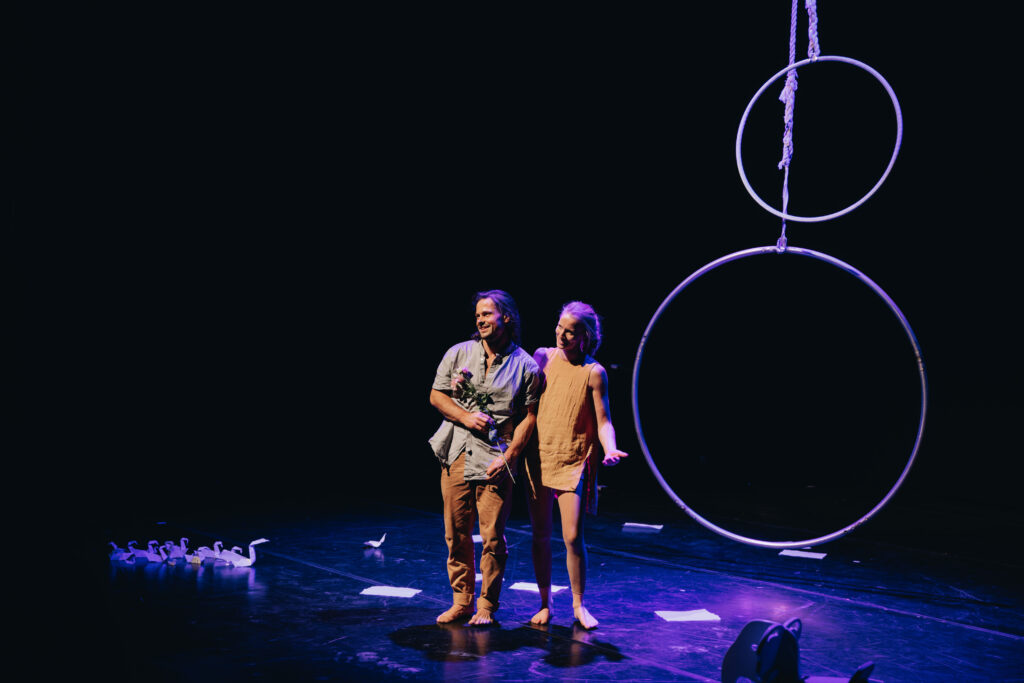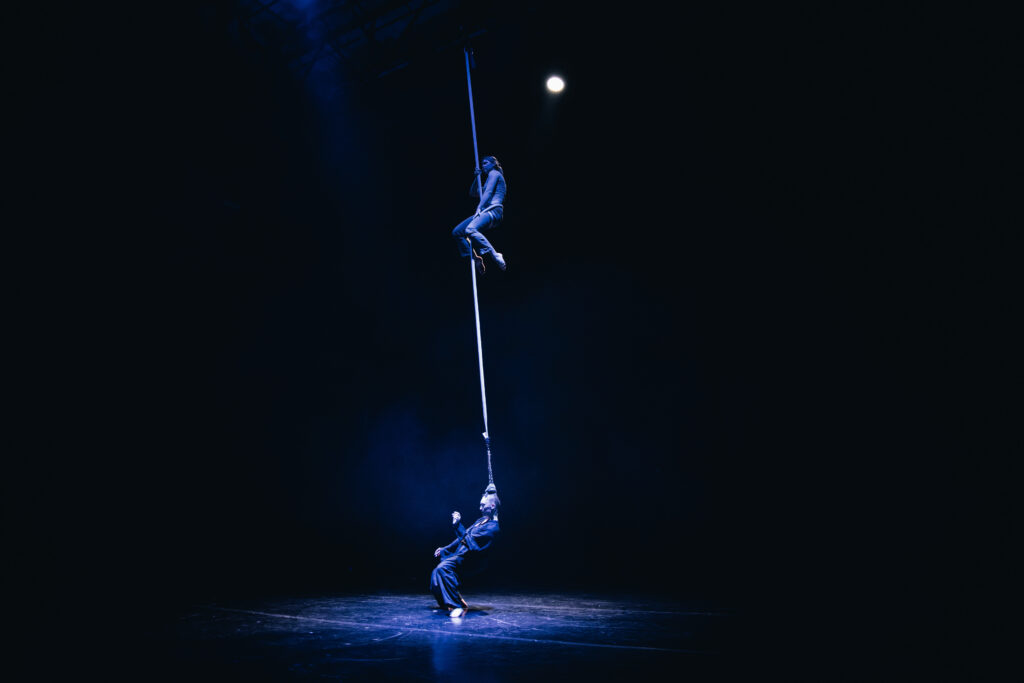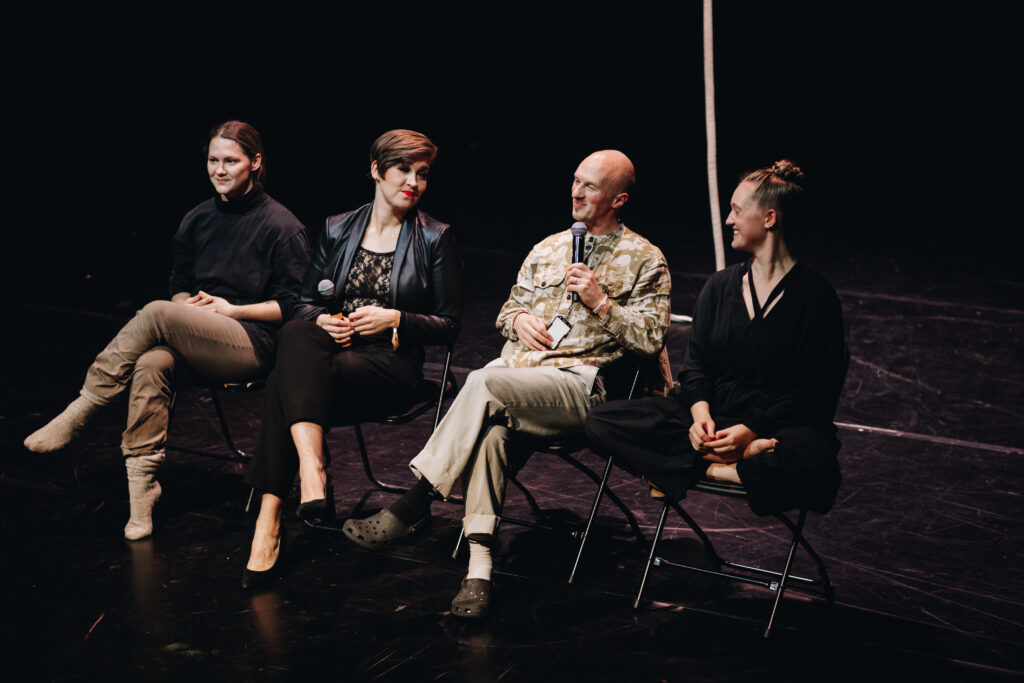Epicirq 2023: Heading Towards Diversity in Baltic Circus
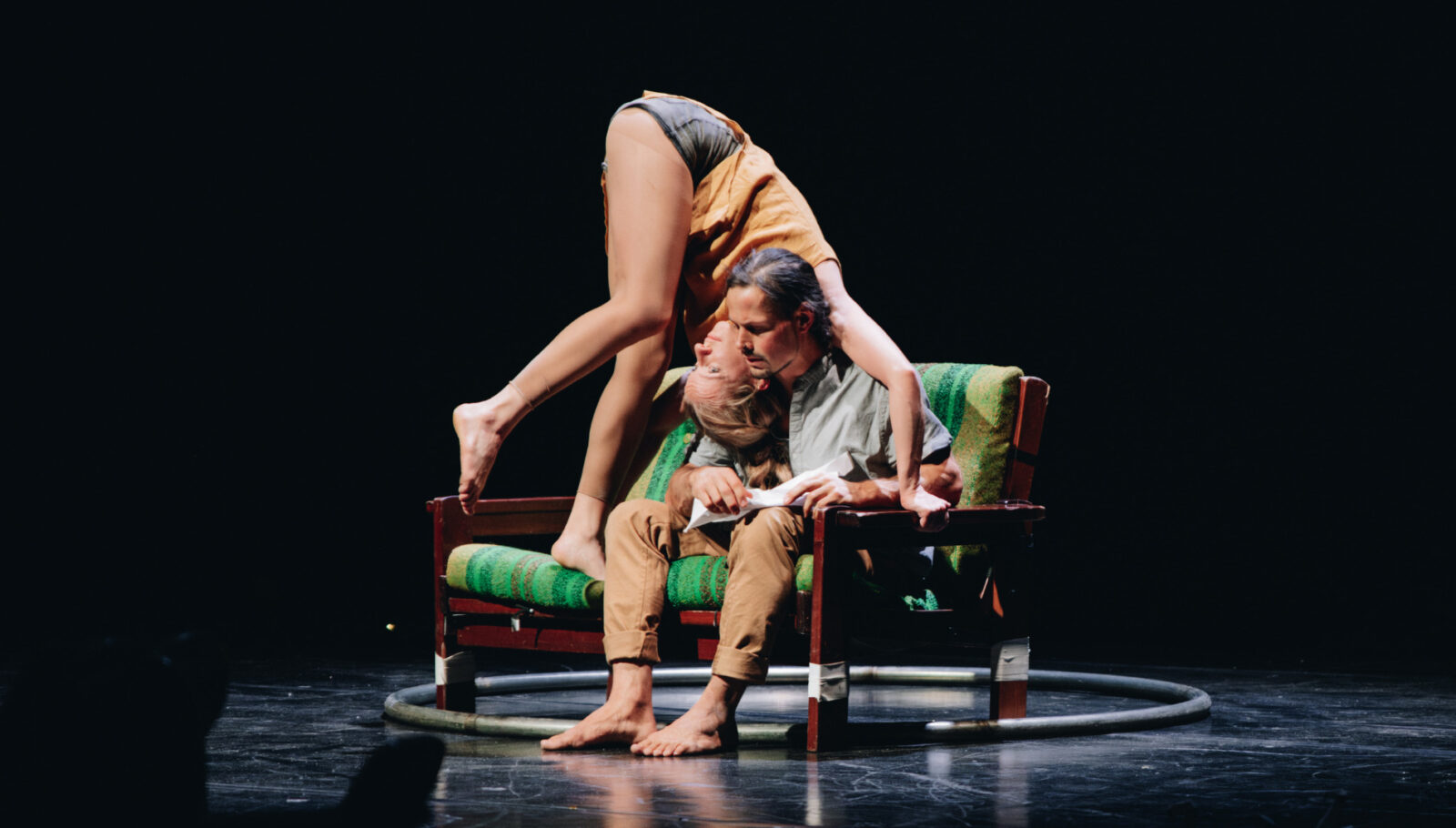
From its introduction to the region into the present, Baltic contemporary circus has been changing forms and taking on new means of physical expression. Reviewer Greta Vilnele reviews some of the storytelling that was on display at the 2023 Epicirq showcase.
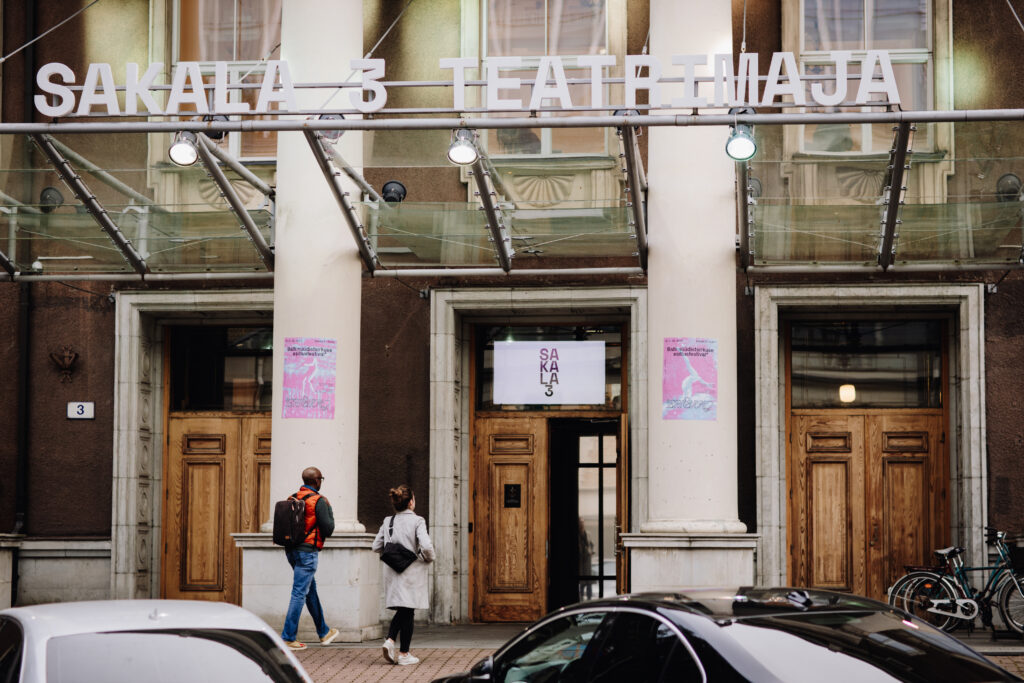
It has been around two decades since contemporary circus first appeared in the Baltic region. And from the looks of the 4th Baltic contemporary circus showcase Epicirq, organized in Tallinn, Estonia, every second year, this recent field in the region has grown just enough to be labeled as distinct and captivating in the context of Europe. Since the Baltics were associated only with traditional travelling circuses just a little while back, there was no common ground on which for contemporary circus to develop. As a consequence, this region has an outstanding style that is hard to define. So I am not going to try to categorize it by specific fields of interest. Using the shows I had the privilege to see at Epicirq as examples, I am going to guide you through the Baltic contemporary circus scene by addressing individual approaches to circus. Let us dive into the infinite forms of circus expression and explore how a circus performance can transform into a commercial show, a therapy session, a personal reflection, and research on the connection between physics and physicality.
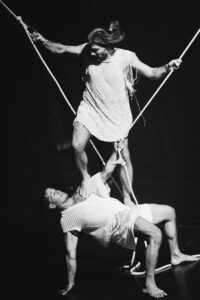
Lithuanian-based contemporary circus company Taigi Cirkas presented their first full-length showUp to this Point, performed by Konstantin Kosovec and Alexey Smolov, and a work-in-progress of their new creation “inTENSE,” executed by Konstantin Kosovec and Izabelė Kuzelytė, at Epicirq. The main figure of both performances is a complex hanging structure made of rope and other materials. Watching their shows gives the spectator the experience of observing a circus artist’s playground. The whole dramaturgy usually revolves around solos for artists attending their disciplines and an acrobatics sequence performed by everyone on stage. I would propose that Taigi Cirkas performances are non-narrative contemporary circus because, as I mentioned before, the performance structure is highly fragmented, and usually there is hardly any detectable relation between the artist duet and the monumental structure; therefore there are no characters to identify with. It is rather a spectacle that derives from the true origin of circus and its core purpose to entertain.

Contemporary circus is not theatre, but in many cases, it follows the same principles and rules: for instance, the construct of the “fourth wall,” as is usually performed in a black box. Soon-to-be-finished performance “Kehakõne” by Estonian artist Grete Gross is a wholesome gathering deconstructing this theatre-like sense of illusion that has been haunting the field of contemporary circus. Grete invites the audience one by one to find a seat in a huge white tent whose shape calls to mind more of a fairytale house than a regular circus tent, gives everyone a cup of warm tea, and starts by reading a fictional text followed by silk acrobatics. Near the end, the spectators are individually invited to rise from the ground and hug themselves with closed eyes. Most of the people left the theatre hall with tears in their eyes. The exceptional effect of “Kehakõne” comes from a feeling of unity achieved through a shared experience (at one point in the show, Grete asks the audience to stand up and not to let the thin material that separates the artist from the audience fall down by raising their hands) and a caring reminder that although we live in a world full of action and changes, most importantly, we shouldn’t forget ourselves.
The idea for Lizeth Wolk’s (EE) and Alexey Smolov’s (LV) duo pieceNot to be Mentioned came from wanting to explore the personal side of single parenting and its effects on adults who experienced it. Both of these artists were raised by only one parent. Throughout the show, they mostly concentrate on the topic of loneliness, introduced by an acrobatics sequence involving a sofa. The two artists do hand-to-hand, object manipulation, and acrobatics sharing the same sofa which is a clear representation of the day-to-day routine by not interacting with each other at all. They move tremendously close, but their bodies always slip through in relation to one another. In this state of emptiness, Lizeth and Alexey find themselves in a never-ending search for answers. The audience is not astonished by high-level circus tricks on stage, but it is not expected, either. Circus is a mirror helping to reflect personal experiences for the two lonely souls surrendering to the unknown accompanied by only the reassuring memories of the popular tunes which have become a sign of the times they grew up in.
Last but not least, on the stage of Sakala 3 theatre was performed an artistic research-based work-in-progress “How the Spiral Works” by contemporary circus collective Art for Rainy Days (Alisa Bokaldere (LV), Izabelė Kuzelytė (LT) and Jason Dupree (GB)). I would describe it as a poetic piece about the relation between shape and motion. There are two performers on stage – one’s hair is directly attached to the end of the rope, and the other is climbing on the rope itself. The reinvented discipline of hair-hanging gives an additional layer to the performance by underlining the force of gravity. Throughout the whole act, numerous circular motion choreographies are being executed. The possibilities to analyze the performance are on the one hand infinite, but on the other, there are few angles to approach this: either by concentrating on the physicality of the spiral-like motion or attaching all kinds of interpretation to the metaphor of the circle. However, the conceptual nature of “How the Spiral Works” suggests that it’s better to give into the abstractness and withdraw from the necessity for meaning. In “How the Spiral Works,” strong physical narrative leads the audience through the poetry of physics as a guru would guide one through meditation.
Contemporary circus as any other performing art is a versatile tool, a powerful medium but sometimes it is forgotten that on top of all that, it is a form of self-expression. During the Epicirq showcase, it became clear that Baltic contemporary circus artists are not only experimenting with the topics, but reinventing the circus show as a form using innovative approaches, taking part in creating a more diverse contemporary circus scene in Europe.
All images taken by photographer Luisa Greta Vilo. Main image: Not to Be Mentioned.
Editor's Note: At StageLync, an international platform for the performing arts, we celebrate the diversity of our writers' backgrounds. We recognize and support their choice to use either American or British English in their articles, respecting their individual preferences and origins. This policy allows us to embrace a wide range of linguistic expressions, enriching our content and reflecting the global nature of our community.
🎧 Join us on the StageLync Podcast for inspiring stories from the world of performing arts! Tune in to hear from the creative minds who bring magic to life, both onstage and behind the scenes. 🎙️ 👉 Listen now!

